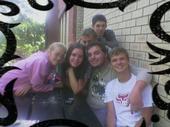The human bones are an obvious and frequent symbol of death, found in many cultures and religious traditions. Human skeletons and sometimes non-human animal skeletons and skulls can also be used as blunt images of death; the traditional figures of the Grim Reaper - a black hooded skeleton with a scythe - is one use of such symbolism. Decayed cadavers can also be used to depict death; while the decomposing body function is to scare, the skeleton is more allegorical. Coffins also serve as blunt reminders of mortality. More recently, the skull and crossbones motif has been used among Europeans as a symbol of both piracy and poison. the most popular representations of death have been the skeleton and the rotting corpse. The movement to personify Death was gradual; it was only by the onset of the sixteenth century, when the well-known painter Hans Holbein der Jüngere produced his own set of woodcuts, that the familiar robed skeleton was in place as an identity. Having a single, universal Death is a suitable extension of the idea of death coming to all, no matter of rank. Before, skeletons were used more as skeletons of the dead than a representation of Death. In medieval Europe, they were often featured in artistic depictions of the dance macabre, or in cadaver tombs which depicted the living and decomposed body of the person entombed. The use of skeletons was in some way counterbalancing the possible criticism towards very sumptuous and expensive monuments (the chapels built with bones and skulls of the Italian cathedrals).
I edited my profile at Doobix.com
Myspace Layouts
Myspace Backgrounds
Myspace Codes
Myspace Generators
